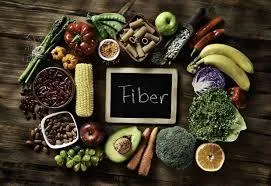
What You're Missing...FIBER
Fuel Fat Loss with Fiber:
Why It’s a Game-Changer for Your Health
When it comes to losing body fat, there’s no magic trick—but there are smart strategies that make the journey smoother. One of the most overlooked tools? Fiber. This powerful nutrient not only supports digestion but also plays a key role in helping you reach your fat loss goals.
Let’s break down why fiber matters and how to easily add more of it to your daily routine.
What Exactly Is Fiber?
Fiber is a type of carbohydrate your body can’t digest. Instead of being broken down like other carbs, it passes through your system, helping everything move along smoothly.
There are two main types:
Soluble Fiber: Dissolves in water, forming a gel-like substance. It helps lower cholesterol and keeps blood sugar stable. Think: oats, beans, lentils, apples, and citrus fruits.
Insoluble Fiber: Adds bulk to your stool and keeps things regular. You’ll find it in whole grains, nuts, seeds, and the skins of fruits and veggies.
Why Fiber Helps You Lose Fat
Keeps You Full, Longer
Fiber slows digestion and helps you feel satisfied after meals. That means fewer cravings and less snacking between meals.Stabilizes Blood Sugar
Soluble fiber helps prevent sugar spikes and crashes, which keeps your energy steady and your appetite in check.Supports Healthy Digestion
A regular digestive system isn’t just more comfortable—it also helps your body absorb nutrients better, keeping you fueled and functioning well.Lowers Calorie Density
High-fiber foods are usually lower in calories and higher in volume. That means you can eat more without going overboard on calories.Delivers More Nutrients
Fiber-rich foods often come packed with vitamins, minerals, and antioxidants—supporting overall health while aiding fat loss.
Fiber-Rich Foods to Load Up On
Here are some top fiber sources to include in your meals:
Fruits:
Apples
Berries (especially raspberries and blackberries)
Pears
Oranges
Bananas
Vegetables:
Broccoli
Carrots
Brussels sprouts
Spinach
Sweet potatoes
Whole Grains:
Oats
Quinoa
Brown rice
Barley
Whole grain bread and pasta
Legumes:
Lentils
Chickpeas
Black beans
Kidney beans
Split peas
Nuts and Seeds:
Chia seeds
Flaxseeds
Almonds
Pistachios
Sunflower seeds
Easy Ways to Add More Fiber
Go Whole at Breakfast
Swap sugary cereals for oatmeal or whole grain toast.Fill Half Your Plate with Plants
Fruits and veggies should dominate your meals. They’re naturally high in fiber and low in calories.Snack Smarter
Choose fiber-rich snacks like nuts, seeds, or a piece of fruit instead of processed options.Add More Beans
Legumes are fiber powerhouses. Toss them into salads, soups, or bowls.Drink More Water
Fiber works best when paired with hydration—keep that water bottle close!
The Bottom Line
Fiber may not be flashy, but it’s one of the most effective tools in your fat loss toolkit. It helps you feel fuller, eat fewer calories, keep your digestion on track, and gives your body the nutrients it needs to thrive.
So next time you're building your plate, think fiber first—your body (and your goals) will thank you.